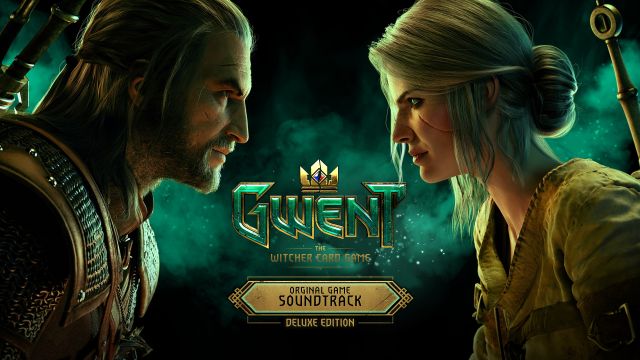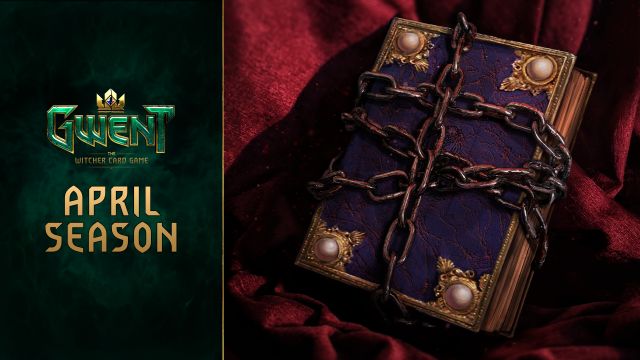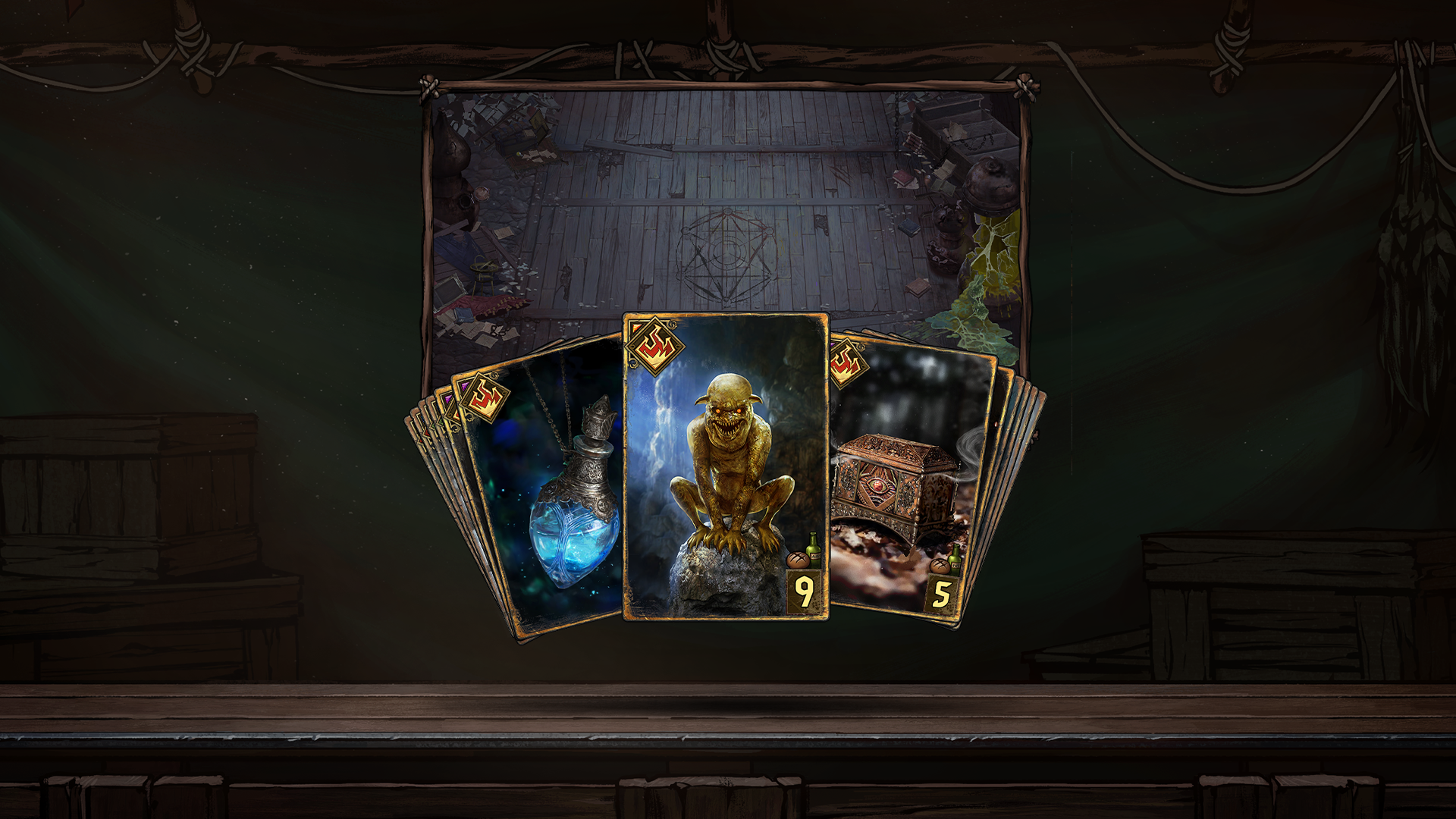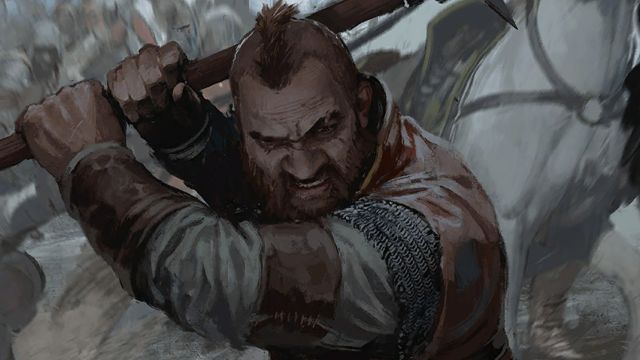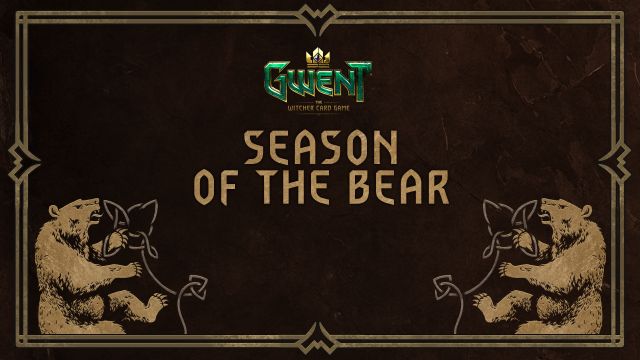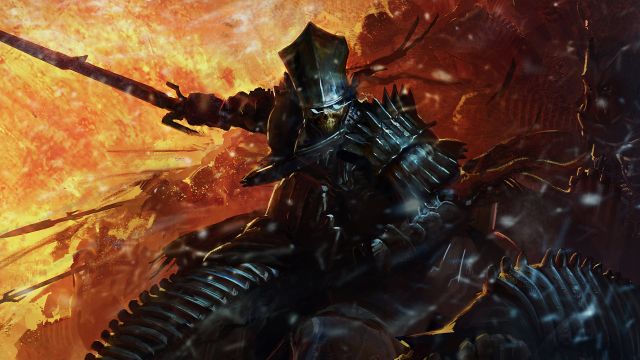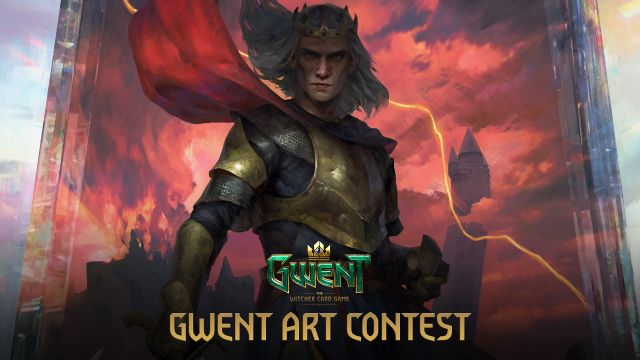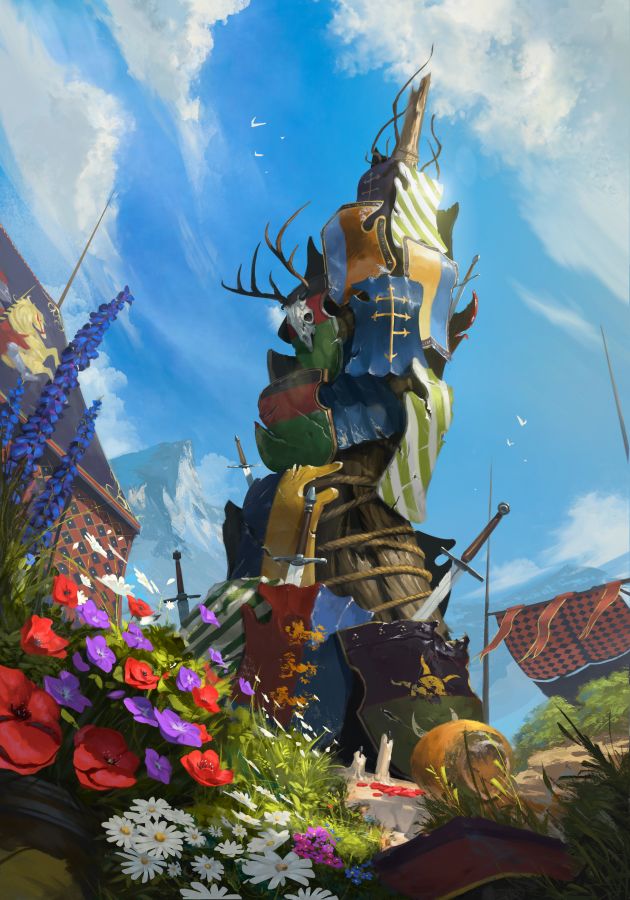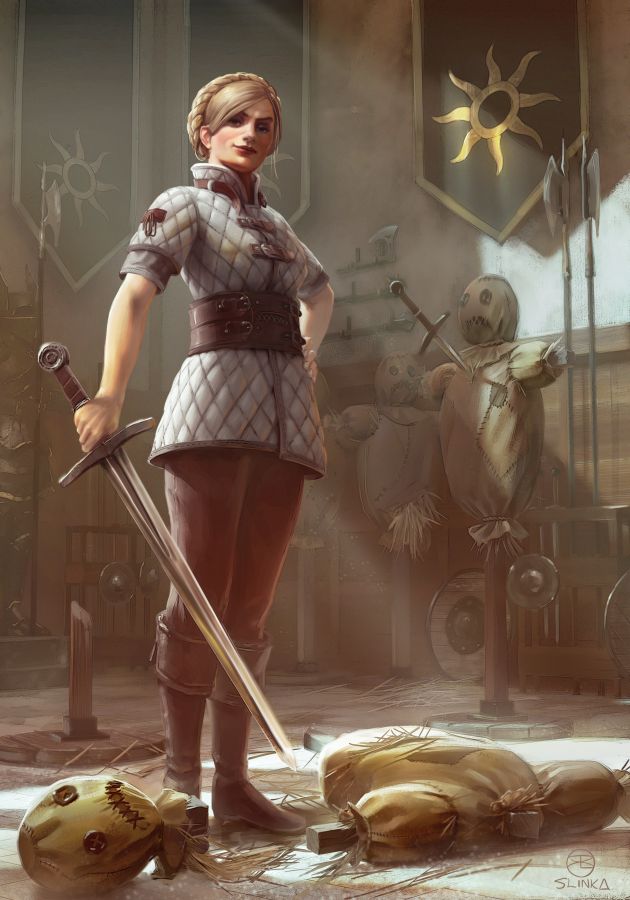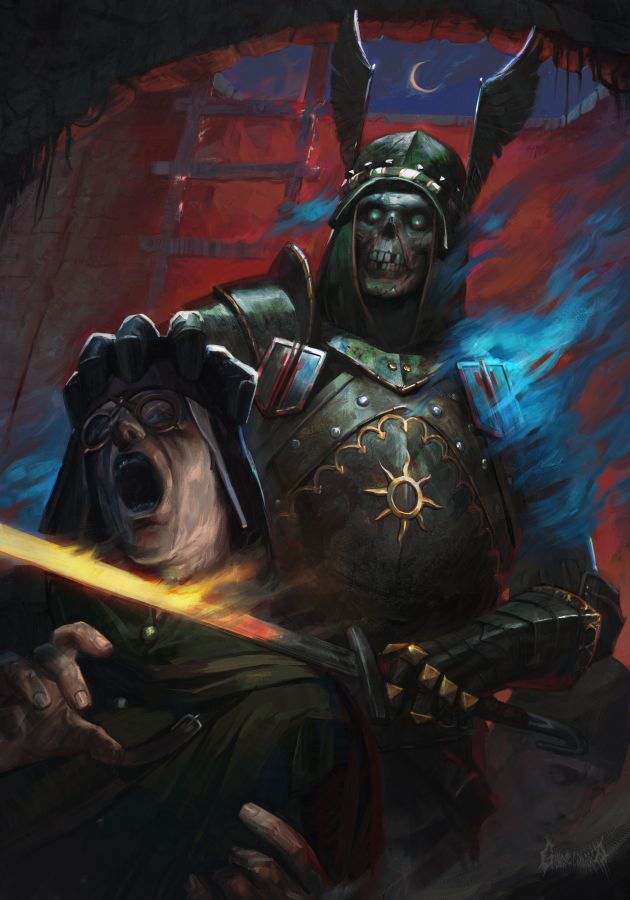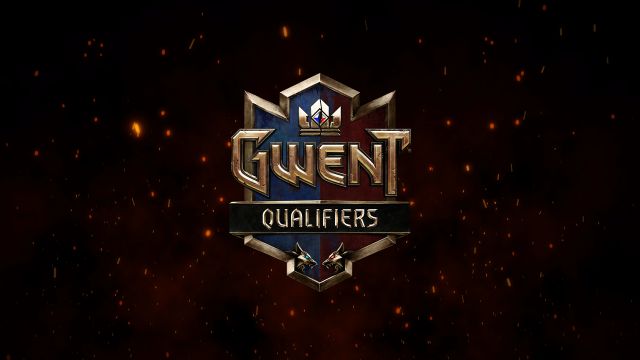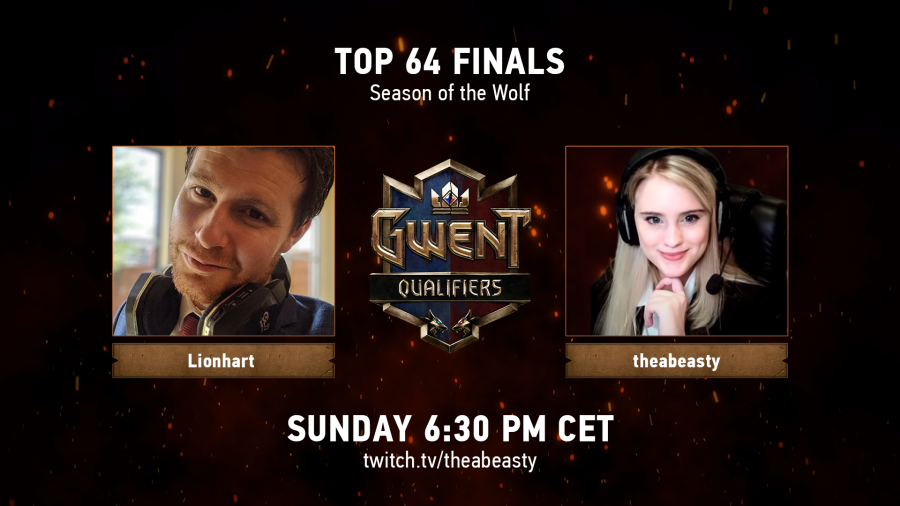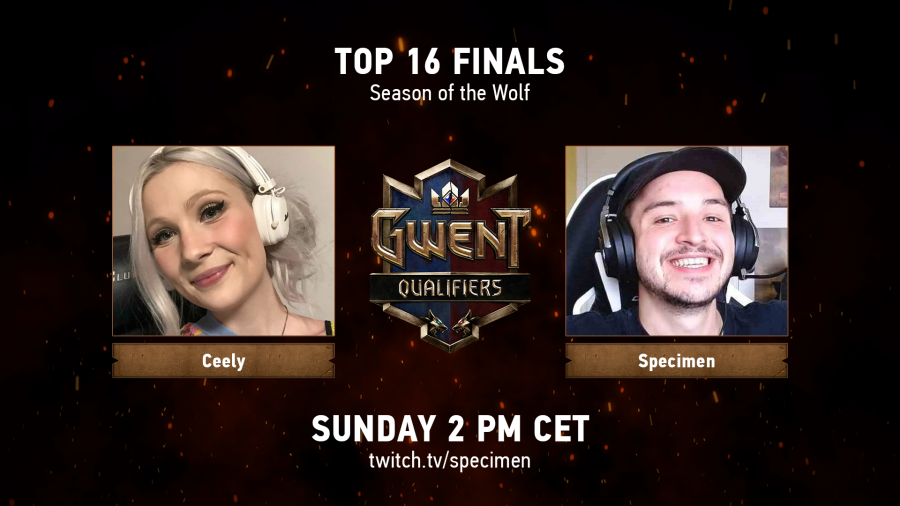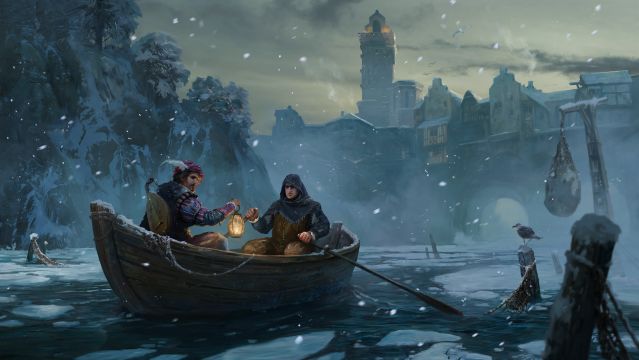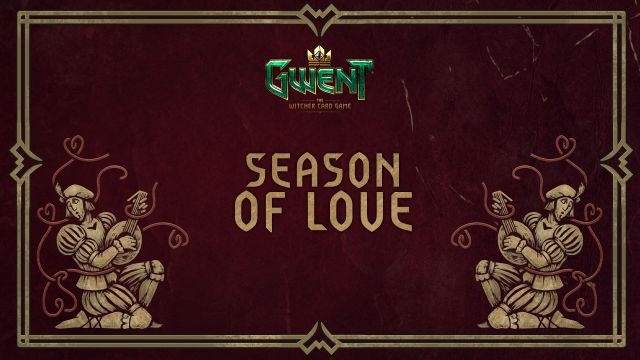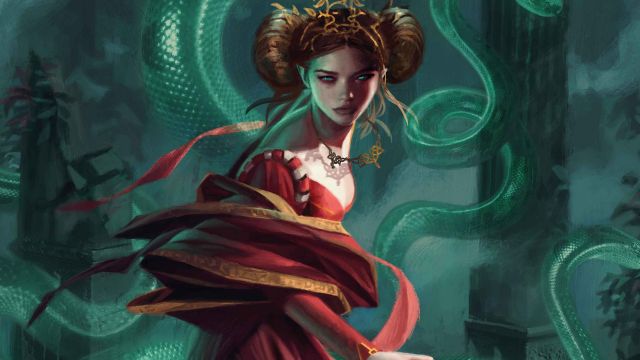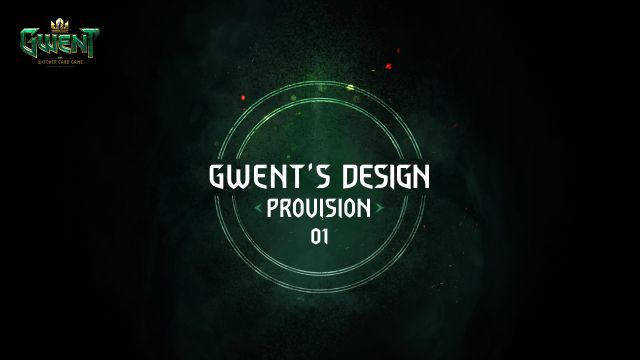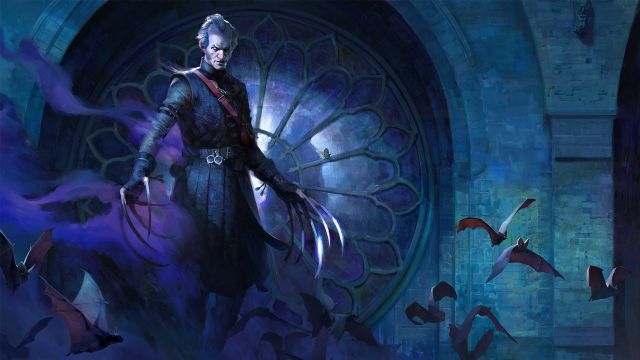
CHAPTER 1
The hospital smelled of death.
‘You need blood, Regis.’
‘I need time.’
‘They’ll die anyway.’
‘Not by my hand.’
Discarded dressings, stained red and stiff with frost, crunched under their shoes. There was no one there to clean them up, nor anyone to bring fuel for the fire.
‘I don’t understand what’s driving you.’ There was irritation in Dettlaff’s tone.
‘Nevertheless, I ask you to respect my decision.’
‘Your stubbornness puts both of us at risk. You’re weakened. You’re slowing us down.’
‘Ethical issues aside,’ Regis continued, ‘your behavior, inherent in your nature, has brought us to our present trouble. We have attracted attention. The trail of drained corpses will only make it easier to track us. So let me direct the route for a while.’
‘What do you suggest?’
‘Blend in. Disguise ourselves.’
‘Among humans? It’s… demeaning.’ Dettlaff shifted uneasily and hissed in pain as he touched the wound under his cloak.
‘It festers,’ Regis stated, discerningly.
‘How is this possible? I can’t close it. And when I tried to transform, I felt it tear more. I don’t understand, it was only a human...’
‘No. Not a human. A witcher.’
Dettlaff shot his companion a look in which reluctance fought hopelessly against curiosity.
‘They are mutants adapted to kill. A guild called on to protect this world from visitors from other spheres,’ Regis explained.
‘From us...’
‘Us too, indeed. Over the centuries, they have accumulated considerable knowledge of those they consider enemies. You experienced that expertise first-hand.
Therefore, I recommend extreme caution.’
The muscles in Dettlaff's jaw twitched as he brooded over his companion's words. ‘Let it be your way,’ he said finally.
The canvas rustled. The vampires’ eyes darted toward the tent’s entrance. An acolyte of Melitele gave them an exhausted smile. ‘I’m now at your disposal, gentlemen. Forgive me for making you wait so long, but I’m here alone. The sisters followed the army to Vizima.’
‘Leaving the wounded to the cold?’ Regis was surprised. ‘What has prompted such haste? The war is over, the Nilfgaardians are defeated at Brenna.’
The adept looked down. ‘The crown was overdue with their payments. Six months. The army was threatening to revolt. The soldiers forced the constable to lead them to the capital so they could retrieve their payments there. I volunteered to serve at the infirmary. And if one vows to serve, it is not only in pleasant weather and with a full belly.’
‘This hospital has been left without ample supplies.’
‘Mr. Constable graciously offered us his personal tent. This one here. And he promised to send provisions and medications, paid for from his own pouch. There will also be some refreshments for you, gentlemen, though sparse. Would you care to eat?’
‘Thank you.’ Regis smiled, lips pursed. ‘We won’t. But tell me please: Did you happen to see any honest travelers passing by? It’s not so safe to venture on our own nowadays. All kinds of shady types prowl the highways...’
‘In the morning, three soldiers wandered here. They claimed a wounded man—said it was their commander. Then they headed west. I was glad they took him. One more unfortunate soul rescued.’
‘Thank you.’
Soon enough, they left the makeshift hospital. The road wandered west among clawed elms.
‘Nobody’s coming for them,’ said Dettlaff. ‘They will be forgotten. I know humans. They have short memories.’
‘The girl stayed,’ Regis replied.
Above them, crows circled the tent.
CHAPTER 2
The snow had stopped falling.
Erskine rubbed his eyes and stared straight ahead at the Sodden fields fading into the twilight. He decided it was a good time to stop. He signaled his two companions to leave the road and turn into a nearby hollow.
Néris threw off her backpack; took out blankets and provisions. Osyan struck a fire. Erskine let go of the sledge rope, sat down, and began massaging his hands.
‘I’ll help you in a moment,’ he said.
Néris eyed the man lying on the sledge. ‘You better rest—while you can.’
‘Fucking sergeant,’ Osyan said, blowing on his fingers. ‘Did he need to stuff himself so much? If he were lighter, we would have crossed the Ina already.’
‘Such luck,’ said Néris.
Erskine hunched over the bandaged sergeant and listened to his shallow breaths. ‘We’re stuck with each other,’ he said. ‘I’ll take first watch.’
*
The stolen wine tasted of ginger. Erskine grimaced, wrapped the blanket around his shoulders, and looked at his sleeping companions. Osyan could very well be his son. He enlisted in the Temerian army shortly before the invasion of the Black Ones. They fought together for Dillingen under Jan Natalis, then with King Foltest when they liberated Sodden. Néris, a condottiere of the Free Company, claimed to be the daughter of a Lyrian baron. Erskine was sure she was lying, because if she had been, he couldn’t imagine she would end up here, freezing half to death on this crazy journey of theirs.
Ah, the journey. Erskine sighed and took a sip of wine. It started with the sergeant and his story about a chest in a debris-strewn basement. Then came the decision they all made together—the path from which there was no return.
The warmth of the fire called to Erskine, inviting him to sleep. He yawned, stood up, and nudged Néris with the toe of his boot. ‘Your watch,’ he said, and handed her the bottle. Néris rubbed her eyes, took a sip, and spat into the flames. He was about to mention the ginger, but stopped when he realized the condottiere was peering into the darkness behind him.
‘Do not worry,’ someone said from the shaded perimeter of the camp.
After a moment, two strangers emerged and entered the illuminated space. ‘We’re unarmed,’ said one of them, gray-haired; the same voice they had just heard.
‘We are on our way to Dillingen. Troubled times, such as these, are best spent in the company of others, don’t you think? Especially when their destination is the same.’
‘How can you be sure it is?’ asked Osyan, who was crouching, his dagger already drawn behind his back.
‘We don’t need companions,’ said Néris.
Erskine was silent. He was assessing the situation. The newcomers did not look threatening. First, they did indeed appear to be unarmed. Second, they looked rather sick—or weak, at least. The gray-haired one was deathly pale and spoke in a soft tone. The other, dark-haired and silent, slumped slightly and pressed his hand against his hip. A fresh wound, perhaps?
The gray-haired man nodded at the sledge. ‘This man won’t last a week,’ he said. ‘Fortunately, however, I am a medic. I have a refuge in Dillingen. If we hurry, perhaps I can help him.’
The wind shook the branches; ignited the fading fire.
Erskine realized that Néris and Osyan were waiting for his response. He considered. If the sergeant dies before they reach their destination, it will all be for naught. A sawbones would indeed be useful…
He released his sword hilt, grunted, and nodded. ‘Do you have names?’
*
By dawn, they were ready to go. Erskine shifted the ashes with his foot while observing the new comrades. The gray-haired one, Regis, wasn’t lying. Although he himself was barely standing, he efficiently replaced the sergeant’s bandages and prepared a compress for his wounds. Surprisingly, the other one, Dettlaff, offered to pull the sledge.
They moved onward. After a few steps, Dettlaff paused, wincing in pain. Regis steadied him with an arm. Erskine adjusted his backpack and caught up with them.
‘You look pretty worn out,’ he said. ‘Who put you in such a condition?’ The newcomers were silent. Dettlaff glanced over his shoulder at the road behind as if he expected to see someone following. Erskine didn’t press him for an answer. Somehow, he was sure he no longer wished to know.
CHAPTER 3
‘An abomination has its lair in our bell tower, master witcher. At night, it flies over the city, kidnaps people from the street, and hauls them up to its den, to devour them. Such horror! How much will it cost for us to be rid of this plague?’
‘Two hundred orens, Mr. Councilor. You have a vampire there. And not just any.’
The councilor was impressed. ‘Indeed, you have already deduced the creature’s nature?’
‘I’ve examined a corpse.’
Sorensen did not see fit to explain that he had been tracking the beast for a long time, on the orders of someone much more important. That he had ended up in the town of Warfurt following its trail. He surmised that if people are willing to pay twice for one job, there is no point in discouraging them.
The councilor mused; shook his nose. ‘Expensive.’
‘Then try it yourself.’
‘We have, of course. Gallant boys from the castle guard are eager to act. But iron does not like this devilishness. We wanted to set fire to the bell tower to drive the bastard away, but...’
‘It’s not right!’ the reverend patriarch, who had so far been gloomily looking through the stained-glass window of the temple at the dark pillar of the belfry, rose and thundered, ‘to kindle a fire under the holy place! Three thousand orens went to the bell tower from the chapel box! Not to, I say, burn it down now!’
‘Aren’t you afraid,’ said the irritated councilor, ‘to scream like that so near to the beast?’
‘Psalms protect us here,’ the priest spat angrily. ‘As long as the song continues, witchcraft has no power.’
The choristers, gathered in the nave, continued to sing. The monotonous sound melted into the noble walls of the temple like the smell of incense. But now, recalled in the conversation, it made Sorensen think. ‘Reverend Father,’ he said to the priest, bowing his head, ‘faith and holy psalms are the surest means against a vampire. Could I perhaps borrow your choristers? Prayer will confuse the monster’s senses and deprive it of its power. I’ll be able to get in close and deal a killing blow.’
The prelate puffed up like a turkey and looked toward the councilor. ‘Of course, son. Of course.’
*
The bait had done its job. The psalm exploded into screams of terror as the vampire plunged from the black sky and fell among the choristers. An eyeless skull, bat wings, veins pulsating with blood under slick skin. Gharasham tribe.
The monster seized the nearest chorister and sunk his fangs into the body. He pinned another one to the ground with an elongated, clawed foot.
The euphoria they experience while feeding overwhelms their senses; makes them lethargic. This is the best time to attack. Sorensen emerged from behind a stone gargoyle, curling up into a throw like a discobolus. The chain whirred through the air. The links twisted around the creature’s limbs; skin hissing against silver. The Gharashami fell, rolled down the sloping roof of the temple, collapsed onto the cobblestone street below, taking a downpour of tiles with him. The witcher gave chase down the gutter. Time to finish the job. He drew his silver sword and struck the neck of the creature struggling in its bonds.
The bat’s silhouette spilled into a pool of blood. The blade rang against stone, and the chain slackened. Released from its constraints, the vampire mutated back into a flesh-like form, struck his wings, and took off with piercing yelps. Sorensen jumped out of the way of the furious charge, rolled over his shoulder, and kneeled down. Spring-loaded arms clicked as he unfolded the switchbow. He aimed. Fired. The stunned vampire staggered mid-flight, rose laboriously into the sky, and tumbled into the belfry with a thunderous brass thud.
The hunter followed the game. He grabbed the elevator rope left by the masons and cut off the counterweight with his sword. The momentum of the falling bricks propelled him to the top floor in an instant.
From here, he could see a bat silhouetted against the moon as it streaked away to the west. He cursed ugly.
CHAPTER 4
The wind brought the scent of herbs and dried meat. Regis stopped. ‘There are other people around.’
Dettlaff confirmed silently.
They had been walking along the Yaruga for three days. Their human companions, still wary of the duo, mostly avoided them and said little. The vampires kept a few paces behind.
‘You found us an interesting company,’ said Dettlaff. ‘The priestess said they were soldiers. Yet, they reek of fear and deception.’
‘They’re deserters.’
‘How do you know?’
‘I suppose. The wounded man… the insignia has been removed from his jacket.’
‘So we attempt to blend among humans by joining a gang of ragged escapees. Perfect.’
‘It’s easy for you to pass judgments. Forgive the cliché, but living among humans teaches one that nothing is simple. We don’t know who they are or why they are fleeing. And from whom. We know nothing about them.’
They stopped at Osyan’s call. He was waving to them, pointing to a nearby farm. A small compound at the edge of the forest. A shabby wagon stood by the fence, and horses were neighing from the stables. The smoking chimney and its promise of a warm hearth called to them. The vampires watched as their new companions consulted, then left the road and headed for the buildings.
‘Right, we know nothing about them,’ said Dettlaff. ‘But I feel that is about to change.’
*
The farmer returned with the cask. He sat it on the table and started filling clay cups. The smell of beer wafted through the room. ‘Forgive me, but I don’t understand,’ he said.
Erskine gulped; wiped the foam off his mustache. He tapped the lily patch on the table with his finger. ‘Well, right, I have already explained. We are the Temerian army, and we’ve been given a covert mission. To carry this... captive... ransomed from Nilfgaardians. We must get him across the Ina as soon as possible. That’s why we need your carriage.’
‘And both horses,’ Osyan said.
Néris was standing by the door, her back propped against the wall. In her hand, she was holding a bare sword, which she was picking between the floorboards. ‘And the contents of the pantry,’ she added.
‘It is not right. How can we survive without a carriage, in winter, here in such remote parts?’
‘We?’ Osyan asked. ‘Who else?’
The farmer glanced towards the door. Osyan spat, pulled out a dagger, and put it on the table. The furnace fires flickered on the flat of the blade.
‘Good people, have mercy...’
‘We’re not good people. It would be such a pity for you to find out exactly why that is.’
‘Osyan...’ Néris said.
‘Shut up. His choice.’
Dettlaff, who had been standing in the shadows so far, approached and tossed a pouch on the table. Coins rang. ‘Do what you want,’ he said. ‘I’m going for a walk.’
As the door slammed, Regis scooped up the purse and moved closer to the farmer. ‘My comrades are soldiers, not thieves,’ he said, looking Osyan in the eye. ‘They only need one mare, which they will harness to a sleigh. The mare for which you will receive... adequate compensation.’
Erskine opened his mouth, scrambling to find some words.
The vampire smiled through pursed lips. ‘Temerian soldiers understand they must not deprive you of your belongings,’ he said. ‘If they did, the news of their covert mission could reach the wrong ears. And that… well… that would put them in grave danger.’
*
Aine felt the branches under her boot.
She scattered the snow, picked up the brushwood, and threw it in the basket. She had collected enough, so she decided to go home.
She walked briskly, humming her favorite song under her breath. Stopping at the edge of the forest, she dropped the basket and backed away sharply. She waited behind a tree for a long moment, then slowly peeked out from the trunk.
There were strangers at the hut. A woman was pulling Ludka by the reins; the mare huffed and kicked restlessly. Two men emerged from the pantry, lugging sacks and casks. The fourth, the older one, was talking to her father at the cabin.
Aine then sensed someone else. Someone much closer.
‘You’d better wait here,’ said a voice from behind her. Low, mesmerizing.
‘But my father...’
The stranger put a hand on her shoulder. Cold and pale. Bloodstains on the palms. ‘He’ll be fine. They will be gone soon. Look. Take a good look. This world of yours where nothing is simple.’
‘I do not understand.’
‘Nevermind.’
The girl was silent. She watched the gray-haired man take something from his purse and put it in her father’s hand. Gold flashed.
‘They will only take Ludka?’ She asked after a moment.
‘Yes. My friend has the gift of persuasion.’
‘That’s good.’
‘Good? You were lucky. They wanted to rob you.’
Aine turned and looked the stranger in his eyes. ‘But someone was watching over us.’
CHAPTER 5
The Ina River sparkled in the last rays of the setting sun.
The Vidort and Carcano fortresses towered over the water. Burned down during the war, they were now being slowly rebuilt by the Temerian army.
Osyan turned their attention to the north.
‘There,’ he said. ‘Ice connects both shores. We’ll go that way.’
Erskine snorted through his fingers. ‘I don’t like it,’ he said. ‘The crust is thin in places, riddled with holes, and the forts are too close. We should go on to the Ina and Trava fork. Look for a secluded ford. It will be better, safer for the sergeant.’
‘As for your companion...’ Regis said. ‘If you do have his best interests at heart, I recommend you hurry. The most sensible thing to do would be to ask for help from Carcano. They probably have ample medical supplies. But I can see that you are not fond of this approach.’
‘Well, we’re not fond,’ Erskine said. ‘Took the words from my mouth.’
Dettlaff smiled. ‘What’s wrong with you, Temerian soldiers?’ He asked. ‘Won’t you look for support from your own?’
‘Look here, you smart-ass,’ Osyan said. ‘Did we ask who you are? Where you came from? Or who abused you to the point of looking like dead bodies?’
Dettlaff was silent.
‘Let’s go to Fen Carn then,’ Regis said. ‘I used to have a summer cottage there, maybe some supplies remain.’
‘Have you lost your mind, sawbones?’ Erskine asked. ‘We are not pushing upon accursed elven grounds. It’s not good for the sergeant, you say? Well, we’ll just have to force the Ina. Here. And then make haste to Dillingen.’
*
They entered the river under the cover of dark clouds. Only the cracking sound of ice disturbed the silence.
Just as it seemed they would pass unnoticed, a thud sounded behind them.
Osyan cursed. ‘Three riders. Armed patrol.’
The Temerians saw them right away. One spurred his horse and galloped towards the fortress, the other two trotted to the shore. They dismounted, drew their swords, and ran onto the ice. ‘Halt!’ they shouted. ‘Halt!’
The mare pulling the sleigh snorted and obeyed.
‘Move, you nag!’ Erskine shouted and yanked the reins. With no result. Moments later, the Temerians were on them, so close that they could see their faces.
Regis looked at Dettlaff. ‘Let’s try to negotiate.’
Osyan spat and twirled his slingshot.
The projectile whistled and dinged against the helmet of one of the soldiers. He groaned and fell onto the ice. The second jumped at the nearest—Néris. They got in a scuffle, lost their balance, and fell into a nearby hole.
‘Néris!’ Erskine dropped the reins and started toward the crevice.
Osyan grabbed his arm. ‘Leave it!’ He shouted. ‘We have to run!’
Regis had had enough of running. He jumped into the cloudy waters and located the condottiere, who was wrestling with the Temerian as they both sank—the latter’s armor dragging them to the bottom. Néris kicked, exhaling from her mouth. Regis swam down, took hold, and tried to lift, overestimating the capacity of his newly regenerated body. He tugged and felt his shoulder pop out of the joint. His teeth grated. He tried again. Bones cracked and pain exploded, pressing him to the brink of collapse.
Then Dettlaff plunged into the water.
He pushed Regis aside, grasped the condottiere with one hand and the Temerian soldier with the other. He separated them and swiftly ascended to the surface.
*
Erskine and Osyan were nowhere to be found by the time they crawled onto the gravel beside the Ina. An alarm sounded from the riverside forts. Regis attempted to help Néris stay standing, but she refused the offer and ambled as fast as she could towards the forest. He quickly followed, turning back to catch a glimpse of Dettlaff dragging the soldier away before the treeline blocked his view.
They ran for a long time through the forest; then, exhausted, they walked among the Fen Carn mounds. Néris had heard of the dark fame of the place but was too tired to protest.
Finally, they came to a hut with a simple interior. There was a table lined with bottles and dried herbs on the walls. The smell churned in her nostrils.
Regis dug out dry clothes from the mess, and as she changed, he looked for something among the bottles on the table.
‘This is your cabin?’ She asked.
‘Mine,’ he said, and winced in pain as he rubbed his shoulder. ‘There it is.’
They went outside and sat down by the bonfire. Regis kindled the flames. He wiped the dust and cobwebs from the flask, uncorked it, and handed it to Néris.
She swallowed. Alcohol scratched her throat; filled her with heat.
‘Oh, gods... What’s that?’
‘Tincture of mandrake.’
‘Want?’
‘Thank you. I am abstinent.’
‘An abstinent moonshiner, who, without hesitation, throws himself into treacherous depths to help strangers. You are a mysterious figure, Regis.’
‘Well... I once met a dwarf who called himself an incorrigible altruist. Apparently, this attitude is close to mine.’
They sat in silence. Néris stared at the shadows blinking in the snow behind Regis for a long time. Something was wrong. Finally, she understood what. She stiffened and groaned softly. ‘You don’t cast... You’re a...’
‘Yes. I am.’
She pulled away sharply, covering her neck with her hand.
Regis threw more logs on the embers. ‘Relax. I said I was abstinent. Besides, if I wanted to hurt you, I would have just let you drown.’
‘Dettlaff?’
‘Dettlaff, too. But it will be better if you keep it to yourself.’
The fire crackled. As if summoned, Dettlaff emerged from the shadows and sat down between them.
‘The Temerian will live,’ he said. ‘I carried him to the walls, made sure they could see him.’
Néris was trembling. Her head was buzzing. Regis’ clothes irritated the skin, and his oversized pants were slipping from her hips. She pulled them up and tightened the belt as much as she could.
‘What’s with you?’ Dettlaff asked.
She hesitated, but only for a moment. Then she decided.
She swallowed the tincture and smiled.
‘Nothing,’ she said. ‘Everything’s all right.’
CHAPTER 6
Out of breath, the councilor scrambled up the tower. They warned him of what he would find there, so he readied himself with a scented handkerchief, which he pressed against his nose. Sorensen was already inspecting the scene. Corpses in various stages of decay filled the vampire’s nest, yet the pungent stench did not seem to disturb the witcher.
‘The money is waiting next to the horse, master witcher. The patriarch urges you to leave the city as soon as possible.’
The hunter shrugged. He measured the distance between the wounds from the fangs with his hand. ‘Peculiar. Bite marks indicate two different jaw patterns. The Gharashami brought victims here, broke their spines so they could not defend themselves. Like a bird that chews up worms for its young.’
The councilor frowned. ‘What does it mean?’
‘It means he was feeding someone.’
*
‘Sabrina.’
Nothing, again. The xenovox faltered in the cold. Sorensen would have loved to toss the talking box into the river and be done with it. Unfortunately, he needed an answer. As curiosity overcame his irritation, he tried again.
‘Sabrina, you stupid wench.’
‘Sorensen, honey. How courteous you are,’ the device replied in a metallic voice. The anxious horse pricked its ears and slowed to a trot. The witcher gave him a spur.
‘You lied to me.’
‘Really?’
‘There are two vampires. It will cost you double.’
‘This is the only reason you bother me? To bargain?’
‘I want to know the identity of your fugitive. And the circumstances of the escape.’
‘"No questions.” Was that not our agreement?’
‘The risk has increased. I need to know who I’m dealing with. Otherwise, I go back to Angren.’
The silence stretched on. Sorensen began to suspect that the xenovox had once again refused to cooperate.
‘Me and two fellow sorceresses were entrusted with razing Stygga Castle, the seat of the renegade wizard Vilgefortz of Roggeveen. We found the remains of this creature killed by a spell. We tried to regenerate it. And we succeeded.’
‘You resurrected a vampire? For what purpose?’
‘To question him. He could have had important information. Stygga Castle witnessed epochal events that we still do not fully understand.’
‘I’m sure he turned out to be a charming interlocutor.’
‘Not really. Among the humans, he introduced himself as Emiel Regis. There are many indications that this is an ancient, sophisticated creature. But upon awakening, he was driven by blind hunger. Before I could question him more thoroughly, he fled. I apparently underestimated him.’
‘Or he was assisted. As I said: there are two vampires. They travel together.’
‘Are you regretting our deal? Or are you still haggling?’
Sorensen ignored her. A shabby little cottage appeared around the bend. He pulled the reins and steered his horse there.
‘I have to go. I’ve got work to do.’
‘Good boy.’
*
‘Temerian Marauders. Common thieves. They wanted to rob us outright. The gray-haired one stopped them. He calmed them down. Without even raising his voice. Didn’t let the others strip the pantry bare. And he paid for the mare.’
‘Gold...’ Aine looked down. The word slipped out of her mouth before she could think.
The witcher rubbed the scar on his neck. ‘Show me.’
The farmer glared at his daughter. The newcomer had enough weapons on his horse to supply a dozen troops. And those eyes, like a snake’s or a lizard’s. No point messing with a man like that. Willy-nilly, he took off his clog, tore open the sole with a knife, and took out a coin.
A winged lion with a human head, stamped in tarnished gold. A chariot on the reverse. Sorensen had seen such coins before. In the Dur Lugal Iddin mounds. A wolf's grin spread across his face. He had been thinking the trail was going cold.
‘This coin is over three hundred years old. Today, it can mostly be found in tombs. You are lucky, landlord. That they were not interested in you.’
‘Grave robbers, right? Graveyard hyenas?’
Sorensen adjusted the girth, put his leg in the stirrup, and jumped onto the saddle. ‘Worse. This is someone who remembers those times.’
The farmer watched the departing gold. He swallowed hard, sighed, then went to calm his daughter, who had locked herself in the woodshed. He had not the heart to be angry with her.
CHAPTER 7
Néris shielded her eyes from the wind and caught up with Regis.
‘You said you had a refuge in Dillingen. This is where you go?’
‘Yes.’
‘For what?’
‘To hide. A witcher is following us. A monster hunter.’
Two days had passed since they left Fen Carn and returned to the Yaruga. The sky was finally clearing up, and the snow-covered plains sparkled in the setting sun.
‘A witcher? In my eyes, for beings like you, even five of them should pose no challenge.’
Dettlaff unbuttoned his coat, exposing his hip.
‘Look.’
Néris hissed as she assessed the hideous cleft in his side.
‘He attacked me in Warfurt three weeks ago. Normally, it would heal overnight.’
‘Vampire hunting seems to be his specialty,’ Regis said. ‘We have to be extremely careful.’
‘It would be careful, then, to stay at Fen Carn. Use its reputation as shelter…’
‘Superstition and a pile of stones aren’t enough,’ said Dettlaff. ‘But there are places that have been created to give us a safe haven.’
Néris cracked her fingers.
‘I want to ask you for help. Somewhere near Dillingen...’
She broke off at the sound of voices. Regis pointed to a camp set among the wilted trees. A couple of tents with holes and smoke billowing out from fires within.
‘We’ll return to this conversation,’ he said.
*
‘They ousted us from our homes at the end of the war and are still sitting there. Soldiers—damn them to hell.’
Stone-faced, they stared at the camp of exiles behind the woman as she told her story.
‘They’ve festooned our village with their banners, they’re treating it like a military post. I told them: this here is my home, and there, on the water, that’s the boat in which my father and grandfather used to sail the Yaruga. But they didn’t care. So I took the kid in my arms and I begged for mercy. It’s winter, I said. It’s cold. We’re hungry. I pleaded for them to spare one hut, to behave like human beings.’
‘They didn’t budge,’ said Dettlaff.
A child peeked out from behind the woman. Hopeful eyes on a hungry face. She brushed his hair back from his forehead, then adjusted his hood.
‘They called the Nilfgaardians intruders,’ she said. ‘Bloody invaders. But now the fight with the Blacks is over, the country is supposed to be liberated. Yet we cannot return to our own huts. Seems to me, we’re the ones who lost.’
Regis gritted his teeth.
‘Wait until tomorrow. Return to your homes at dawn.’
‘But the military ... We tried.’
‘Yes. Now let me try.’
*
It was dusk when they reached the settlement. There were five huts with snow-crushed roofs, a lone pier, the swinging masts of fishing boats. Laughter and joyful shouts came from the largest hut.
Regis took the bag off his shoulder and handed it to Dettlaff.
‘Wait here,’ he said.
The door creaked as he pushed it open and stepped inside, into stagnant air thick with pipe smoke. The soldiers gathered at the table fell silent.
‘Who are you?’ asked a bearded man with a scar on his temple.
‘My name is Emiel Regis. I am traveling to Dillingen.’
The soldier leaned forward, resting his bristly chin on a plump fist.
‘Are you going alone? Brave of you.’
‘Or stupid,’ another soldier chimed in.
‘Or stupid, indeed,’ said the bearded man. ‘You are lost, Emiel Regis. But luckily for you, there is a road that leads beyond the Hills. Then you just need to go straight on.’
‘I know that.’
‘Then why come here?’
‘I met some people who you expelled from their homes. Children, even, were denied shelter.’
Regis closed the door behind him and approached the table. Tentative fingers drifted towards the hilts of swords.
‘Those were the orders,’ said the bearded man.
Regis met his eyes and raised his hand. The bottles on the table trembled.
‘Orders have changed,’ he croaked. ‘This place doesn’t belong to you. You will depart to Vidort without delay. You will forget our meeting and forget that you were ever here.’
The bearded man’s features loosened, and his face lost all expression.
‘Yes, my lord,’ he whispered.
As the last of the soldiers left the cabin, Regis felt his eyes fog up. He tried to approach the bench, but his legs refused to obey. He collapsed, banging his head against the chair.
As the darkness enveloped him, he remembered the beginning of their journey. A hospital in the wasteland, the quiet groans of the dying. The smell of death.
They will die anyway.
Not by my hand.
Dettlaff stands beside him, his hands dripping red.
You need blood, Regis.
CHAPTER 8
‘Where’s the money, you son of a bitch? Talk!’
‘Ghrr!’
The crows watched indifferently as the men went about their errands. The sergeant, now pale as a drowned man, quickly regained his blush as Osyan grabbed his throat and choked him.
‘Ghrr!’
Erskine entered the glade. He cursed and dropped the pile of brushwood he was carrying. In a few strides, he reached the sled, grabbed Osyan by his coat and threw him to the ground.
The old man, now the color of beetroot, flailed under the furs as he gasped for air.
‘You want to kill him, you halfwit?’ Erskine growled and gave his companion a kick in the ribs.
‘Have you lost your mind? Why didn’t you call me when he woke up?’
Osyan scurried on his elbows, out of reach of Erskine’s boot.
‘Not kill. Just scare a little.’ A snotty smirk crept across his face.
Erskine glared at him. If Osyan had somehow managed to extract the location of the hideout, he would have grabbed the sergeant and dashed off into the woods without a second thought, abandoning his accomplice in the cold. Just like they did with Néris.
‘It happens again, and I’ll hang you by the balls.’
‘You’ll both hang,’ growled the sergeant. ‘Deserters. Traitors!’
They chuckled in unison.
‘Why treat us in such a way, Commander? We snatched you from Death’s gaping maw! Tended to you while you were sick! You ask me, we deserve a crumb of gratitude, eh?’
‘The executioner will gladly thank you with his axe.’
Erskine blew on his rough, stiff hands, then leaned against the railing of the sled. Osyan got up from the ground and took his place on the other side. The sergeant scowled at them from under frosted eyebrows. The dice had already been cast. There was no point in lying. Not after Osyan’s display.
‘Where did you hide your loot, you old thug?’
‘It belongs to the company. It will be divided fairly.’
’Don’t make me laugh. It’s the spoils of robbery—in Dillingen. Oh-ho, the honor of a thief, eh?’
‘Taken under Conqueror’s Law. From a city reclaimed from the Blacks. What are you, Erskine, a wartime virgin? This your first, is it?’
‘Not the first. But probably the last, once we claim this loot. I think I’m done marching behind trumpets.’
Osyan pursed his lips, drew his knife, spat on the blade, and wiped it on his cuff.
‘Why waste time explaining yourself? Let’s start cutting and let him sing already.
’Erskine shrugged, adding nothing but his silent consent. He still felt a semblance of respect for the sergeant, whose steely stubbornness had led their unit to success on numerous occasions, and didn’t want to yank him around like some rabid animal. So he allowed the old man a moment to come to his own conclusions, to familiarize himself with the severity of the situation.
Osyan, of course, understood little of this. He had entered King Foltest’s service last fall after Kaedweni cavalry plundered and razed his father’s farm. Experience had taught Osyan that ‘soldier’ meant ‘thief with impunity.’ That’s why he enlisted.
The blade slid beneath the furs, its cold edge pressing against the sergeant’s skin. In his scarred face, anger and bitterness gave way to helplessness. Resigned to his fate, he spoke.
‘On the Yaruga, a day’s ride east of Dillingen, there is a sawmill. We clashed with the Nilfgaardians there—they wanted to use the barges to retreat across the river…’
Erskine and Osyan stooped over the wounded man like ravenous vultures.
CHAPTER 9
Dettlaff seated Regis at the table. He looked around the room, went to the basement hatch.
‘It was reckless,’ he said.
‘I know.’
‘Just don’t say you need time. You know what needs to be done.’
‘I know.’
The fire in the hearth had died, and darkness engulfed the interior of the abandoned hut. Néris sat down at the table and sipped the mandrake tincture. Regis was massaging his temple, sore from the fall.
‘You said you wanted our help.’
‘Yes.’
‘So I have a condition: end the secrets. It’s time for the truth. Provided in its entirety and as succinctly as possible. Please.’
‘The truth is boring, Regis.’ She sighed. ‘Somewhere near Dillingen, there is a chest containing the spoils of war. Arnault—that’s the sergeant’s name—hid it there to keep it safe until the end of the war. Unfortunately, at the end of the campaign, he was wounded in battle. We took him from the field hospital so he would not die there, cold and miserable.’
‘And so he could give you the location.’
Néris was silent. Regis spread his hands.
‘Forgive me, but I am not convinced.’
‘You know what awaits him if we don’t follow them. Erskine and Osyan … you’ve met them. You have seen who they are.’
‘And who are you?’
‘I’m only interested in gold. I don’t want him dead.’
‘How noble.’
‘Nobility I leave to you, Regis. No, don’t protest. I’ve seen you take care of Arnault day after day. You helped me too, though you didn’t have to. Do you want the truth? Here it is: you already know that without our help, he will die. You will come with me because your conscience compels you.’
Dettlaff raised a trapdoor in the floorboards.
‘She’s right, Regis,’ he said. ‘Let’s get it over with.’
*
It was damp in the cellar, and darker still.
Regis ran the charcoal across the floor, closed the symbol. Inside the circle, he placed the clay bowl they had taken from the hut at Fen Carn.
‘Why did you save him, Dettlaff?’
‘Who?’
‘The Temerian soldier, back at the Ina. You could have left him.’
‘I could. But saving his life ... it seemed like something you’d do.’
The circle glowed, ancient magic set the air in motion. Dettlaff stood over the bowl. With a swift movement, he cut his wrist. Blood flowed.
‘It’s always been easy for me,’ he said. ‘I’ve been around for a long time. I have a firm opinion about humans and their parodies of civilization. They spread through this world like a plague. They arranged it so poorly that it could not possibly work.’
‘You thought so until now.’
‘I still think so.’
‘And yet something has changed.’
Dettlaff winced, wiggled his numb fingers.
‘You see something more in them,’ he said. ‘You’re still trying to help them. It’s...’
‘Naive?’
‘Intriguing.’
Dettlaff closed the wound and left the circle. Regis took his place. He grasped the bowl in both hands, whispered an incantation, and drank.
Fresh blood spilled inside him, spurring tremors of euphoria. Vampire senses, previously muted, exploded forth. He heard every murmur. A whirlwind throwing snow across the hills. The burble of the Yaruga’s cloudy waters. A horse’s neigh and hoofbeats on a faraway track.
*
The stallion grunted. Sorensen slapped him with the reins. He wanted to make sure he got far enough away from the hut.
Dawn was breaking when he reached the clearing at Turlough Heights. Pines cast long shadows on the rocks. He sat on the trunk of a fallen tree and wrapped his cloak around him.
‘Sabrina.’
‘Do you have any idea what time it is? Do you think sorceresses don’t sleep?’
‘I found the vampires.’
A sigh.
‘Contract fulfilled?’
‘Not yet. But I heard their conversation. I know who they are following.’
‘Sorensen, sweetheart ... if I needed a tracker, I’d hire one. I believe you are a witcher?’
‘A witcher, not an idiot. The gray one, Regis ... I assumed killing him would be an act of mercy, but he is not going to his grave. At the Yaruga, he hypnotized a band of soldiers.’
‘Do you want to bargain again?’
‘I want help.’
A soft laugh.
‘You’re lucky I’m prepared.’
It flashed, then a portal opened nearby. Power poured forth from the swirling chaos and formed the shape of a weapon. The contour became clearer and clearer, then finally it filled with heat and solidified. An ornate dagger fell into the snow.
Sorensen picked it up, ran his finger along the runes.
‘What do I do with it? Sharpen stakes?’
‘It’s enchanted. It activates on contact with vampire flesh. I didn’t manage to reproduce the spell completely, but what I imbued into the dagger should be enough.’
‘Are you sure it’ll work?’
‘No. Vilgefortz, the creator of the spell, was devilishly clever. Recreating the formula was an expensive challenge, the blade infusion process alone took a week. Use it wisely. It only lasts a single use.’
‘I remind you that there are two of them.’
‘Yes, yes. But you, my dear…’
Sorensen sighed. He hopped off the trunk and slid the dagger under his belt.
‘But I am a witcher.’
‘And you will come up with something.’ She paused. ‘Correct?’
Sorensen mounted his horse. He looked at the sled tracks that ran across the clearing to the west.
‘Do I have another option?’
CHAPTER 10
The door, hanging dubiously from a single hinge, ricocheted off the wall as Osyan stormed out of the sawmill, huffing and heaving.
‘Nothing. Nothing! Not even a rusty old coin!’
‘Did you find those loose bricks he was talking about?’
‘Have you seen the cellar? Half the bricks are loose! I pulled down most of the wall and there was no hiding place. Dirt’s caving in from outside for fuck’s sake. We’re in the wrong place, I’m telling you.’
Erskine looked around at the clearing: An exhumed mass grave, frozen corpses scattered about, their bodies gnawed on by wild animals. Black Nilfgaardian cloaks emblazoned with the scorpion mark.
‘There is no mistake. These are the corpses of the Seventh Daerlan lancers. Just like the old man told us.’
‘So he must have mixed things up a bit. Wake him.’
A rattled laughter came from the sled; the sergeant was already awake and listening to their conversation. He guffawed, relishing the moment.
‘What you laughing for?’ Osyan growled and swung at the old man. Erskine grabbed his wrist.
‘Calm it, would you? He’s saying something.’
Erskine brought his ear to the commander’s mouth and listened to his whispered rasps:‘You’re already dead, you foolish fucks.’
Grinning, the sergeant pulled his hand from the furs and pointed towards Dillingen with a trembling finger. A low-hanging sun, hiding behind a forest of bald ash trees, cast long sinister shadows across the terrain. The two deserters scanned the direction the old man had indicated.
Suddenly, Erskine squatted and inspected the nearest body. Armor plating was etched with a crisscross of claw marks, pried open to expose the frozen, shredded meat beneath. Bones were splintered and snapped by jaws far more powerful than a wolf’s.
The Temerian, now himself pale as a dead man, sprang to his feet and turned to his partner.
‘Dead Eaters.’
The sergeant’s malevolent cackle rang in their ears as terrible eyes flashed frantically amid the trees in the falling darkness.
*
The witcher followed the tracks of the sleigh. It was dusk when the forest turned to a clearing where an abandoned lumberjack hut stood aside clusters of felled trees. Then a hungry howl burst through the mellow hum of the river. And mad baying. The horse huffed, threw its head, and refused to go any further. He had to leave him, continue on foot.
Sorensen slipped behind the tree line and into the opening. The full moon danced on the silver waters of the Yaruga, on the silver snow, on the witcher’s silver sword. A pack of ghouls crept around the sawmill, trying to get to the people barricaded within. A sleigh lay abandoned by the waterwheel. One of the wretched creatures was devouring some poor sod lying upon it. The horrid smack and crackle of rent flesh and crushed bone filled the air.
A bolt from the arbalest swept the monster off the sleigh and nailed it to a tree.
Sorensen removed a small bomb from the hook on his belt, fired the fuse with the Igni sign, and went to work.
*
The witcher, in all honesty, was just as terrifying as the Dead Eaters.
The reptilian eyes. Swollen, blackened veins bulging in the neck and temple. Clothes sodden with the foul stench of monster blood.
‘Do you have booze?’
Somehow, that instantly made the man more relatable. Osyan handed him a canteen.
‘Your friends are coming here. They will join us soon.’
The deserters glanced at each other. Erskine instinctively placed a hand on the grip of his blade. Although, he did not favor his odds.
‘What gave you the idea we’re traveling in a larger company? You following our tracks?’
‘Only the two who joined you on the way.’
‘You got beef with them?’
‘Sort of. I was paid for them. I am a witcher, if you hadn’t surmised.’
‘And they are, what, drowners?’
‘Vampires.’
Erskine was speechless for a moment.
‘They seemed quite ordinary,’ he finally choked out.
‘I am surprised too.’ The witcher shrugged. ‘Nevertheless, they are most deadly.’
Osyan, consumed by his disappointment, kicked a pile of rusty tools, as if they were personally accountable for his failure. The heap replied with a sad clatter as it fell apart.
‘The old man fooled us. Led us here to find death instead. Such a long way, and we won’t even earn an oren.’
The witcher reached into his pouch. He rolled the coin between the fingers of his bloodied hand. Sphinx on the obverse. Chariot on the reverse. Ancient gold caught the reflection of the moonlight. The deserters gawped at it, as if mesmerized.
‘I don’t know what your business was here. But I think I can suggest something better. I need partners.’
‘You pay…’ Osyan swallowed ‘… with gold?’
‘Not me.’ The witcher smiled maliciously. ‘Vampires. They have more of it. And you ... you can help me set a trap.’
CHAPTER 11
The battlefield was silent. The full moon sparkled on the icicles hanging from the sawmill, on the rusting armor of the fallen soldiers.
They found the sleigh by the water wheel.
Regis stepped over the bloodied remnants of the mare. He parted the furs under which the sergeant lay.
Black holes where eyes should be. Shredded cheeks. A mouth frozen in a contorted scream.
Néris doubled over, vomited.
Somewhere behind them, in a shadow-shrouded thicket, a bolt-ring clicked.
A flash shot through the darkness. The projectile shattered Regis’ arm, pinning him to the sleigh. The wound sizzled and smoked, the smell of burning meat engulfed the air.
‘Over there!’ Néris shouted. She yanked her sword from its scabbard and dashed towards the tree line.
Dettlaff already knew who they were dealing with. He remembered the sound; he remembered the gleam of runes on silver.
Transforming in an instant, he thrashed his leathery wings and flew towards the forest. He overtook Néris and descended into the thicket, ready to meet the witcher.
*
The monster took the bait.
Sorensen watched it rise to the sky, spread its wings, then disappear into the trees. The condottiere ran after the beast, her sword drawn.
The witcher was grateful for this decision; he didn’t want to have to kill her.
He drank his potion, sighed heavily, and jumped out from behind a pile of boards. In two strides, he reached the vampire still pinned to the sledge. One quick blow to behead the bloodsucker.
He swung his sword and the silver blade whistled.
A heartbeat too slow.
The vampire freed itself at the last moment, deflecting the blow with its claws. But the witcher allowed no respite. He feigned a downward strike, broke the rhythm of his steps, then lunged forward, thrusting at the beast’s midriff.
The monster recoiled out of the way, then pounced, its gleaming claws missing Sorensen’s head by an inch. The witcher dropped to his knee, cut low. This time, he hit his target, slashing the beast’s lower leg. Without a moment’s hesitation, he aimed his follow-up at the neck. The vampire shielded itself with its hand. The blade sliced through its fingers, lost momentum, and hissed past the beast’s maw.
The monster lunged at the witcher, its claws wrapping around his throat. Sorensen grunted, snatched a bomb from his belt, and dropped it at their feet. There was a bang, followed by a high-pitched whine. A thick fog enveloped the area, blotting out everything but the immediate vicinity. The witcher swung his sword, slashed the beast’s chest, then blasted it backwards with an Aard sign. The vampire careened into the sled and rolled into the darkness along with the sergeant’s corpse.
Sorensen inhaled greedily, rubbing his neck. A smile crept onto his lips. The monster was bleeding profusely; the wounds inflicted by the manticore’s silver would flare up at any moment, weakening it further.
He gripped his sword in both hands and calmed his breathing.
‘Time to end this,’ he said.
*
Human shapes flashed red in Dettlaff’s eyes. A crossbowman and… someone else, lurking in the shadows. Their blood bore a familiar scent. The two fools with whom he had recently traveled. He did not detect the witcher’s presence. Disturbing.
The string twanged, but the bolt missed, struck away mid-flight by a dismissive wave of his claws. Dettlaff swooped lower, faster, hooking the shooter with a wing and knocking him from the boughs. He dropped the weapon as he fell from his perch, landing hard in the snowdrift below.
Dettlaff made a tight arc in the air, then landed, reverting to his human form. The other man must have imagined he had gone unnoticed, as he sprang from his hiding place behind a trunk, his dagger lunging at the vampire’s neck. With inconceivable speed, Dettlaff caught the ambusher’s wrist before the strike landed. His gaze lingered on the blade, the runes etched into it glowed an ominous blue. He was curious, but only for a moment. Turning his attention back to the man, he crushed the bones seized within his grasp. The attacker howled as the weapon slipped from his limp fingers. Dettlaff shoved him backwards into the snow.
He glared at the two cowering men, both helpless and terrified. They looked at him like condemned criminals awaiting their sentence. Hearts pounded like hammers beneath their chests. Lungs expanded, sucking in nervous gulps. Breath exhaled, steam billowing in the chilled air. So much fear, trembling, struggle, deceit—what was it supposed to do? What good was it?
‘Why?’ he asked. His own breath was cold. Invisible.
Before they could force their tight throats and chattering teeth to obey, Néris appeared from the direction of the sawmill.
‘They’re monsters,’ Osyan gasped, clutching his broken arm. ‘You stuck with them, and they’re monsters!’
Néris did not grace him with a reply. Catching his lustful glance towards the dropped dagger, she picked up the weapon and turned to Dettlaff.
‘They killed the sergeant. Finish them or let me do it.’
The vampire gestured to her to wait.
‘I can’t understand. Why?’ he repeated. ‘The commander led you here. Was it not enough to take the money and leave? Why draw weapons against us?’
‘There is no money!’ Osyan screamed. ‘The old man lured us to a battlefield haunted by Dead Eaters! He took his secrets to the grave—that’s what he did, the rat-bastard!’
‘But they,’ Erskine interjected, pointing to Dettlaff, ‘are carrying real royal treasures with them, they are! Gold from ancient tombs. What they used to pay for the horse we took along the way. The witcher ... the witcher showed it to us.’
Metal flashed. Néris caught the coin tossed her way by the Temerian, inspected it closely. It had to be worth a fortune.
‘They have more. More than you could ever spend. We were chasing the sergeant’s cache, while all this time…’
Dettlaff was disappointed. Regis had almost convinced him that there was more to these creatures. That humans weren’t just treacherous oafs consumed by greed and bewitched by base desires. That they weren’t as vile and debased as they seemed at first glance. But his friend was wrong. They were irredeemable. Like the sergeant’s hidden cache, there was no treasure to be found among humans. The casket had been opened, and it was empty—it always would be.
Dettlaff picked up a flailing Osyan with one hand. He tilted his head, extended his fangs, and let the scent of blood fill his nostrils. Euphoria pulsed throughout his body.
Then there was a sudden pain.
Néris, striking with the speed of a viper, had sunk the dagger as far as the crossguard into Dettlaff’s arm. The vampire dropped Osyan, jumped back, hissing and baring his teeth. Blue flames flared from where the enchanted blade had been lodged. Slowly, the blaze consumed his limb, licked at his neck. He reached for the weapon, attempting to free himself from the malevolent spell. Then Erskine grasped the crossbow in the snow, took aim, and released. A silver bolt whirred through the air and pinned the vampire’s free arm to a tree trunk.
With one arm nailed to a tree, the other devoured by enchanted flames, Dettlaff called for the power of blood and tried to transform. But the witcher’s silver prevented the metamorphosis.
He let out a chilling howl, and the night responded with a distant bark.
‘I want my share doubled,’ Néris said, helping Osyan to his feet.
CHAPTER 12
He tried to get up, but his shattered leg refused to obey. Blood oozed from a gash in his chest. His fingerless hand throbbed incessantly.
Regis looked at the sergeant beside him, envious. At least he felt nothing anymore.
The witcher was closing in. The moon danced on a blade of silver.
There was only one way.
I’m sorry.
He crawled to the corpse and sank his fangs into it.
A metallic aftertaste fluttered on his tongue. The euphoria hit in waves, pulsating within. The wounds faded, and the pain dulled, drifting somewhere far away.
The witcher emerged from behind the remains of the sleigh and cursed. Regis got up. He inhaled deep. His eyes turned red.
He roared like a feral animal. His face elongated into an ominous mask, long claws sprouted from the fingers of his healthy hand.
The rest was a blur. He watched the events unfold from behind a veil, like an intruder in his own body, wearing the flesh of a primal beast.
And the beast wanted blood.
The witcher folded his fingers into a sign, but this time the monster dodged easily, letting the wave of energy scatter snow instead. He then reached for another bomb, but was too slow. Far too slow. The vampire hit him with a furious blow, claws pierced his body with ease. His fingers slackened and the silver blade dropped into red-spattered frost.
The beast extended its fangs.
The artery was throbbing, the heart beating, blood pumping. It was time to surrender to nature. To do exactly what he was made for.
I do not want this.
Regis froze. Facial features smoothed and softened, claws retracted with a hiss. He released the witcher, letting him collapse into the snow.
He listened to the pre-dawn placidity. Soon, the rhythm of beating blood faded, then disappeared entirely. He stooped over the hunter and looked deep into his eyes.
‘I’m not a monster,’ he said.
He turned and walked away into the trees, leaving the witcher alone.
*
The blue flame charred Dettlaff’s hand and forearm, lapped at his shoulder and neck.
‘The witcher said it would finish him off. Burns down to naked bone.’
‘Let him not fool us like the old man did! Where’s the gold, you bastard?’ Osyan drawled.
The vampire wiggled the numb fingers of his surviving hand. The bolt crushing his arm left little leeway. He pushed back his cloak, detached the pouch from his belt, and tossed it to the ground.
Osyan, although wounded, was the first to reach the pouch. Then came the creaking of a bolt being loaded.
‘Leave it be, mongrel,’ Erskine growled. ‘We came for the loot, and you ain’t no soldier, just a stray.’
‘I helped!’
‘Fuck off, you helped. Néris stabbed him.’
‘That’s why I want a bigger share,’ she said.
‘As if.’ Erskine side-eyed Néris. ‘A moment ago, you were in partnership with bloodsuckers. Osyan, don’t you move, or I’ll stick a bolt in you.’
‘There are two ... two of us ... you ... you can’t … reload…’
‘Deal with him, Erskine, then we’re out of here. Before the witcher finishes and asks for his share.’
Erskine snorted. ‘You are a real snake.’
‘Sums are better divided into two than three.’
‘You want a witcher snapping at your heels?’
‘The two of us can deal with him.’
‘You must be kidding. I ain’t sleeping anywhere near you.’
Osyan tried to take advantage of his companions’ squabbling and scrambled away through the trees. They caught up with him quickly. Néris tripped him with her leg. He rolled over the frozen ground and fell into a gully. Then the argument started again.
Soon, eyes lit up among the trees. They had come in large numbers in response to Dettlaff’s call. Silently, they surrounded the ash tree, a stone’s throw from the unaware deserters. Hot saliva dripped from their mouths into the snow as they waited for orders.
One of them yanked the bolt with its teeth, freeing Dettlaff from the tree. He stretched the stiff fingers of his released hand. With a sickening crunch, he tore the remnant of his arm consumed with magic fire and tossed the dagger-pierced stump onto the ground, letting it sizzle in the snow.
He raised his hand, and the creatures of the night trembled in anticipation. The sergeant seemed to know these people best—knew best what they deserved. So Dettlaff decided to honor his memory.
He unleashed the Dead Eaters.
*
It was snowing at dawn.
Dettlaff sat alone by the old ash tree. Regis approached, kneeled beside him. Silently, they stared at the three bodies fading beneath a blanket of white. Gold coins scattered between them.
‘Those two ... deserved to be punished,’ Regis said. ‘But not such a fate.’
‘All of them. All three. They brought it on themselves. Their nature doomed them.’
‘So you have become an expert in human nature.’
‘Expert? No. But I have learned the truth of it.’
Dettlaff noted Regis’ wounded hand.
‘The witcher?’
‘I let him go.’
‘You’re insane.’
‘No. I’m just not who you thought I was.’
The sun peeked out from among the trees. A frosty wind blew snow from the leafless branches. Regis climbed to his feet and adjusted his bag.
‘I’m going.’
Dettlaff stared into Néris’ glassy eyes. He reached down and took a coin from between her fingers.
‘Go,’ he said. ‘Live among the humans. Among your own. May you not find your end there.’
‘And you? What will you do?’
Dettlaff slipped the gold into the purse.
‘I do not yet know. But I know where to start.’
*
Flop, flop, flop. Splash.
‘Sabrina.’
He chose another pebble. Flat. Smooth. Perfect. The calm surface of the Yaruga sparkled in the sun.
Flop, flop, flop, flop. Splash.
‘Done?’ Her voice came from the xenovox.
‘In a sense. I resign from the assignment.’
There was a silence—the sort that comes before a terrible storm.
‘What do you mean, “resign”?’ There was more venom in her words than a scorpion’s sting.
‘You heard.’ Sorensen turned a pebble in his fingers, weighed it in his palm, skimmed it on the water. Flop, flop, splash.
‘You’re scared, huh? I guess the cat’s out of the bag. You coward. Bastard. You poor excuse for a man. You worthless sack of shit...’
The litany went on forever. Sabrina had a mouth like a cobbler and a surprisingly rich and depraved imagination. The xenovox vibrated from all the screaming on the other end.
Sorensen listened for some time, staring at the water. After a while, he grew tired of the whining. He picked up the magical box and weighed it in the palm of his hand.
Splash.
*
A log broke apart in the hearth, a pleasant warmth spread across the room.
Aine sat down on the furs, pulled her bow. The fiddle sounded wrong. She twisted the pin, tuning the instrument, but before she could play, someone opened the door.
She recognized him immediately.
‘Where’s your father?’
‘In Kagen. And your ... comrades?’
‘I’m alone.’
‘Come in, my lord. Keep warm.’
The newcomer sat down at the table. He stared into the flames, pondering.
‘Ludka did you well?’
‘She has reached the end of her journey.’
Aine put the instrument down, moved the logs around. The stranger reached for his belt.
‘The gold you received ... it was worth more than you think.’
‘We don’t have it anymore.’
‘I know.’
The newcomer unraveled the purse and put two coins on the table. Aine sighed.
‘No ... it’s not right. You paid us fairly for Ludka. It is not your fault that we lost our gold because of my stupidity.’
The stranger was silent for a long time.
‘So let’s say that this is also fair payment.’
‘What for?’
‘For the lesson you’re giving me right now.’
He got up and left. Aine stared at the glistening coins. After a moment, she grabbed her sheepskin coat and ran out into the night.
Footprints in the snow disappeared after a few steps. The stranger was nowhere to be seen.
There was only the chilly wind that whistled among the lonely trees. A foretaste of a long winter.




